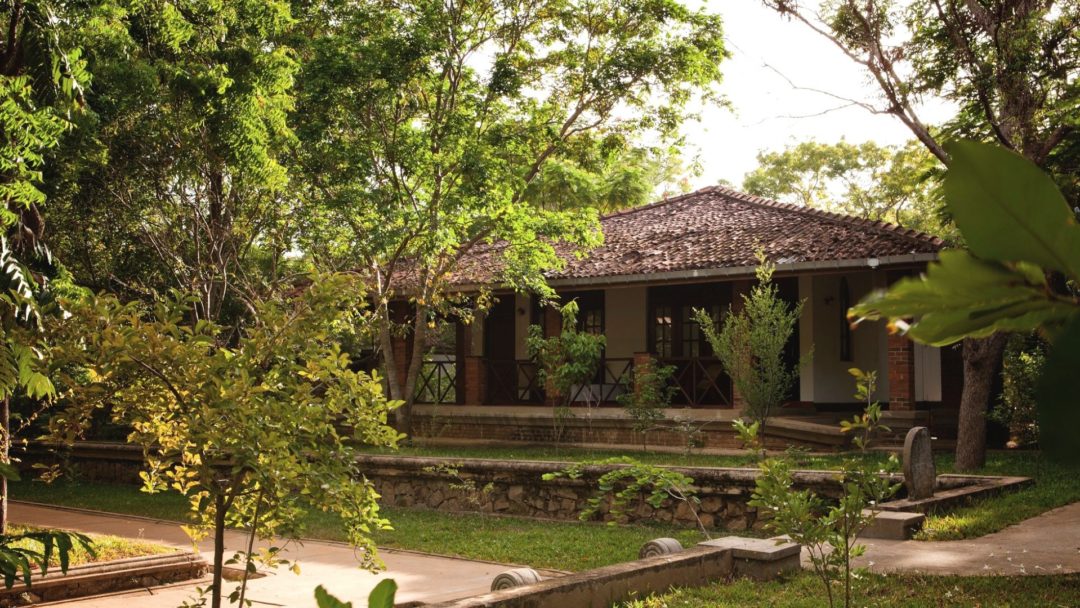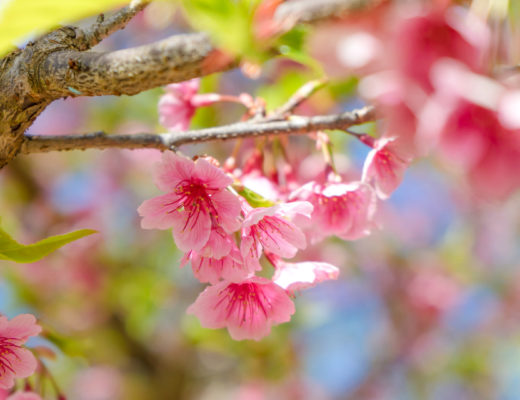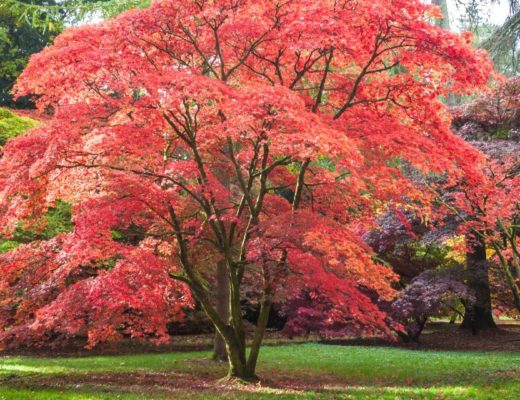Plants are some of the easiest (and most sustainable) ways to make a landscape more vibrant and welcoming. Planting the right tree for the right place helps ensure that your tree will live a healthy life for years to come. The most successful designs are those that are planned and take climate and environmental factors into consideration.
The Right Tree for the Right Place
This guide will help you get started on creating a healthy and functional yard using trees and shrubs.

Plan Before you Plant
What do you want? Before you can narrow down your tree selection determine why you are planting a tree. Here are some of the most common reasons trees are planted in the home landscape.
- Shade: Do you want to add shade to your yard? Pick a tree with a broad canopy that will cast a big shadow.
- Beauty: If you want to enhance your curb appeal, consider planting something with vibrant color or unique texture. Ornamental and flowering trees are a great start.
- Food: There is great satisfaction in harvesting your own fruits, nuts, or citrus trees. And you don’t have to wait 10 years to reap the benefits. Many fruit trees are available in dwarf varieties and can bear fruit in as little as 3-5 years.
- Privacy: Trees work well as a privacy screen and soften harsh landscapes. They also last longer and are more affordable then installing a traditional fence. With so many fast-growing privacy tree options, it’s hard not to add more green to your yard.
- Habitat: Wildlife are a sure way to bring life to any landscape. Whether its birds, deer, squirrels, or rabbits, there is a tree for every critter.
Ask an Arborist: Why Should I Plant Evergreens?
Once you know why you are planting a tree, you can start browsing trees from that category that will help you accomplish what you want.
DIY: A Beginner’s Guide to Landscaping

Selecting your Trees
There are numerous factors to consider when picking the right tree for the right place. Not only do you need to select a tree that is compatible in your hardiness zone, but you must keep in mind other factors that will affect your tree’s health.
- Sun exposure: How much or how little sun your tree requires will help determine which side of your house to plant on, or which tree is suitable for your designated planting site. Ignoring sun exposure can result in a tree that wilts out from leaf scorch or a tree that dies from not being able to photosynthesize.
- Location: As the saying goes, “look up, look down, look all around.” How big will your tree get at maturity? How far will the roots spread? Select a space that is appropriate for the size of your tree when it reaches maturity. And remember, not to plant too close to houses, utility lines, driveways, and other structures that can be damaged.
Pro Tip: If you’re not sure how far to plant from structures, a safe rule is to divide the mature spread of the tree in half and plant it that distance away from your home. If your tree will reach 40 feet high, then plant it approximately 20 feet away from your house. Always err on the side of caution.
- Moisture: Another key factor to consider at your planting site is the amount of moisture your tree will get. Make sure to plant in a space that has adequate drainage and will receive enough moisture when watered.
Ask an Arborist: How do I Choose a Nursery Tree?
Designing your Landscape
Once you’ve selected the appropriate planting site and tree(s), it’s time to design your landscape. Trees and shrubs pair well together to add texture and dimension to your landscape. Diversity is key when it comes to planting. Opt for a variety of species and inter-plant them to reduce the chance of pests and disease. Native species tend to do better in terms of life longevity and health. Plant diversity is healthier for your trees, but it also creates stunning designs.
Brighten your Landscape with a Rain Garden
As you’re designing your landscape, think about the color and form the trees and shrubs will grow into. Don’t be afraid to mix evergreens with deciduous trees and shrubs.
Check out these landscape design plans developed by professional landscape architects. These do it yourself plans are easy to use and will enhance the look of your home, backyard, driveway, or garden.
- Mulch your trees after they are planted. Not only will it make your tree stand out, but mulch is important to retaining moisture in the soil and preventing the spread of disease.
- Incorporate (existing) mature trees and (new) young trees into your design.
- Plant species that are compatible with one another including shade-loving species that will thrive under the shade of a tree.
There are so many benefits to landscaping with trees. In addition to creating a striking landscape, your trees will increase your property value, lower home cooling and heating costs, remove pollutants from the air, cut stormwater runoff, and help lower stress. Planting a tree is a small act with a big impact.
Learn more about the benefits of trees.






Hi Sheeren Othman, thank you for the valuable reference, I really appreciated.
As an architect & environmentalist, I have spend much of my time to do a small and affordable thing that can give a really huge impact to the environment, from making concept and design. From my opinion threes are the only most sophisticated technology of earth that we can used to tackle the crucial issue of climate change that really impact to our today’s word.
I hope that in coming days you can continue share more valuable references to us in this website, so can continue improve our skills and knowledge abroad in environmental aspects word wide.
Thank you for reading John, glad you enjoyed it.
Hi!
I’m new to this site and would like to learn how to design a landscape for my patio home (small yard- zone 9 (Houston, Tx) .
I would like to incorporate one medium size tree a few shrubs and several small flowers in a V shape area, I would like lots of birds/butterflies attracting blooms.
Please advise.
Thanks.
Hi Marissa,
Check out the Tree Wizard tool, it can help you find the tree you’re looking for. https://www.arborday.org/shopping/trees/treeWizard/intro.cfm.
Happy planting!
It was interesting when you explained why it’s important to mulch around the tree, but not till the day after it’s planted. My husband and I have talked about working with a lanIt was interesting when you explained why it’s important to mulch around the tree, but not till the day after it’s planted. My husband and I have talked about working with a landscape design service to make sure the potential is maximized in the front and back yard of the townhome we just purchased. Asking about mulch should help us find a knowledgeable landscape design service, so thanks for sharing this article and giving me the idea!dscape design service to make sure the potential is maximized in the front and back yard of the townhome we just purchased. Asking about mulch should help us find a knowledgeable landscape design service, so thanks for sharing this article and giving me the idea!